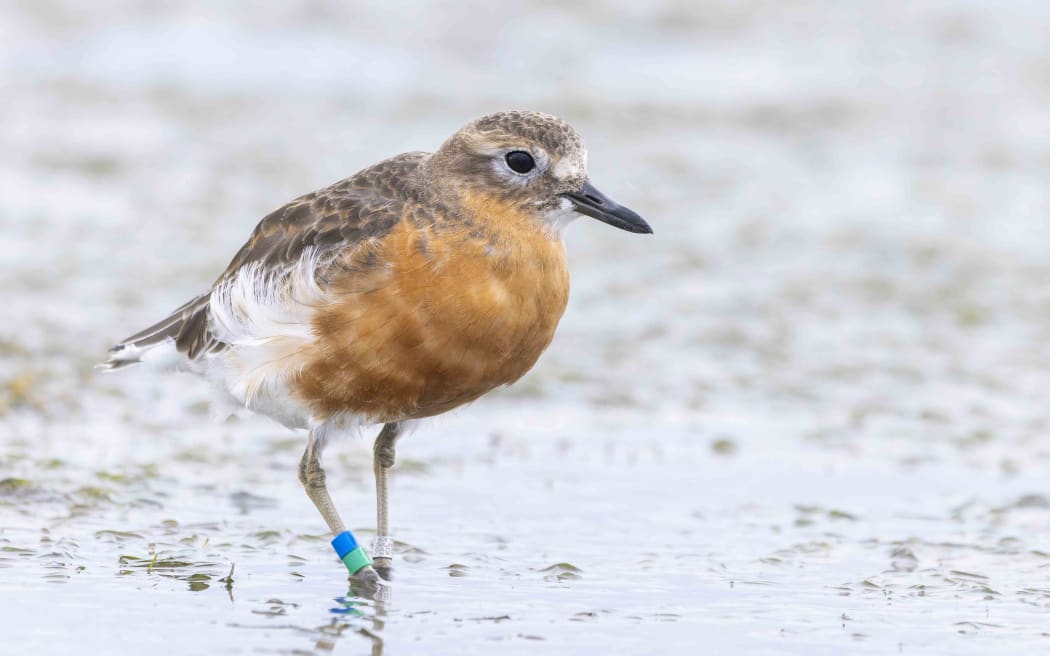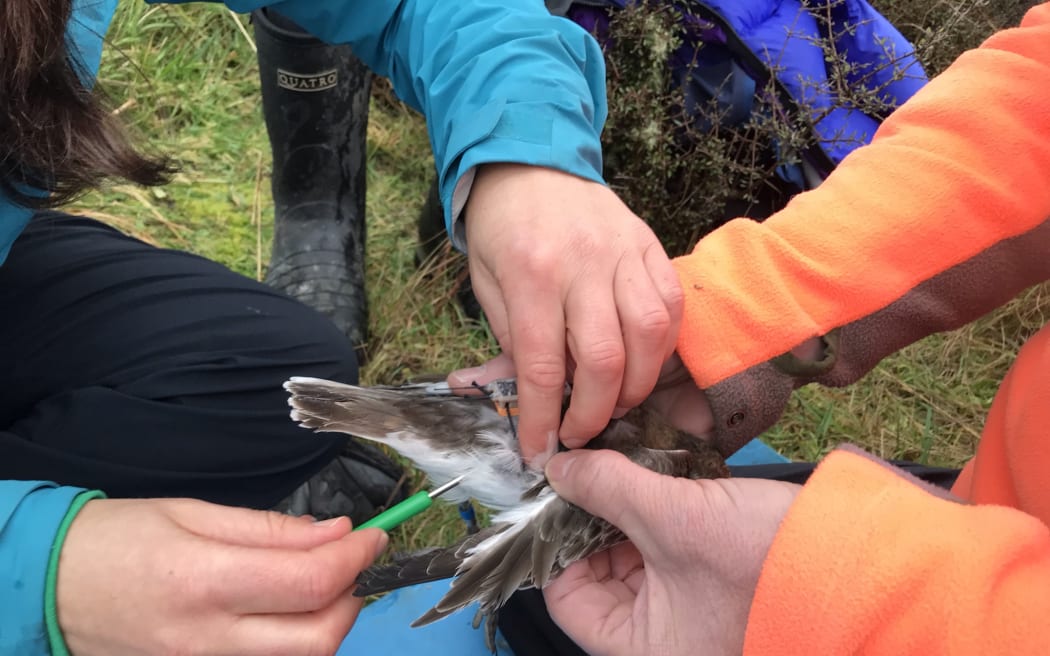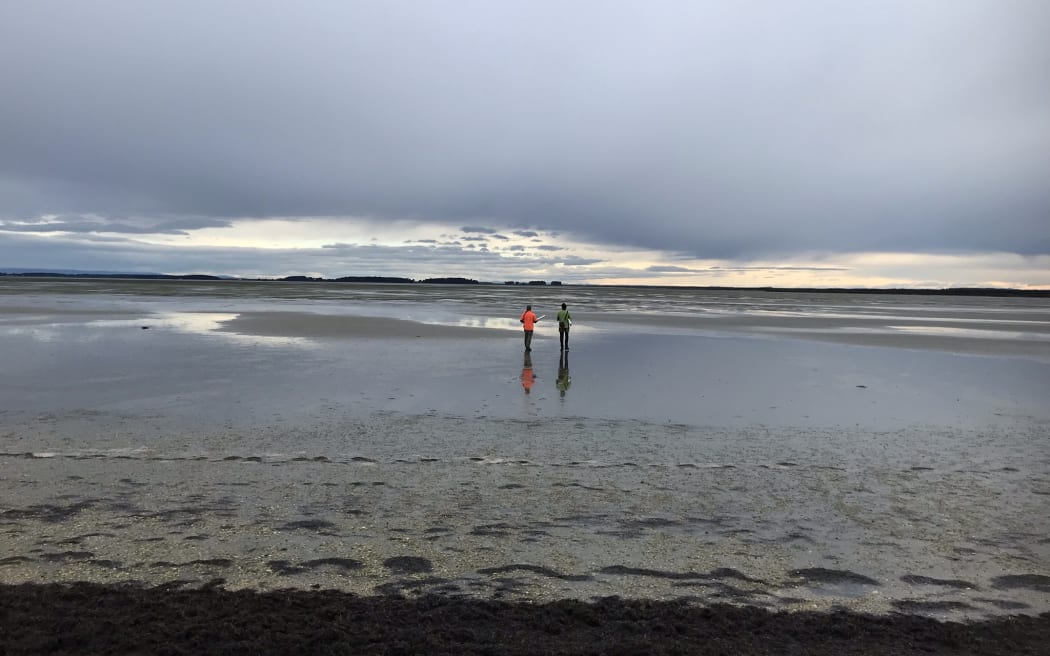As the tide closes in on Awarua Bay in Southland, a collection of wading birds gathers closer together, pecking away at the last stretches of sandbar and seagrass.
Grey plovers, knots, bar-tailed godwits, banded dotterels, oystercatchers, and a single Terek sandpiper, nicknamed Derek.
And among the crowd, a little flock of southern New Zealand dotterels clusters together – at a quick count: 54 birds. Just under half of the total population.

A southern New Zealand dotterel in breeding plumage at Awarua Bay. Photo: © Oscar Thomas
Follow Our Changing World on Apple Podcasts, Spotify, Stitcher, iHeartRADIO, Google Podcasts, RadioPublic or wherever you listen to your podcasts
Declining numbers
“Since 2010 the [southern New Zealand] dotterel population has more than halved,” says Daniel Cocker, a member of the Department of Conservation (DOC) Southern New Zealand Dotterel recovery team. The annual count in April of this year revealed that the population has dropped to just 126 birds.
Plump and handsome – especially when sporting their red chested breeding plumage – these little birds would once have been widely distributed and bred on mountaintops around Southland. Now, they are restricted to breeding on some of the peaks of Rakiura Stewart Island.

Katie Gray uses a crochet hook to make sure the dotterel's feathers are not caught in the tag. Photo: Claire Concannon / RNZ
The breeding site secret
It’s during this breeding phase that they are most vulnerable to predation, and the main culprit is feral cats. Daniel, and the rest of the recovery team based on Rakiura, are focused on predator control in the areas that these birds are known to breed. But they only know the breeding locations for about 20% of the birds – most of them go to mountaintops unknown.
That’s why DOC staff and researchers from the University of Otago have teamed up to attach satellite tags to some of the southern New Zealand dotterels in Awarua Bay. When not breeding, the birds flock here, and in a few other bays on Rakiura, feeding up on the bugs in the sand.
Master’s student Oscar Thomas is hoping that by adding these tags to the birds, the team will be able to discover where they go.

Harry Talarico and Daniel Cocker walk out onto Awarua Bay to try to catch some southern New Zealand dotterels. Photo: Claire Concannon / RNZ
Listen to the episode to get to know this Southland underdog, hear the story about how Daniel first got involved in their conservation at age 14, and learn how the satellite tags are fitted to the birds.
To learn more:
- Listen to the full episode on Our Changing World.
- Find out more about the southern New Zealand dotterel by visiting their DOC page, Birds New Zealand page, following southern_dotterel_boty on Instagram or check out the New Zealand Nature Fund page for them.


